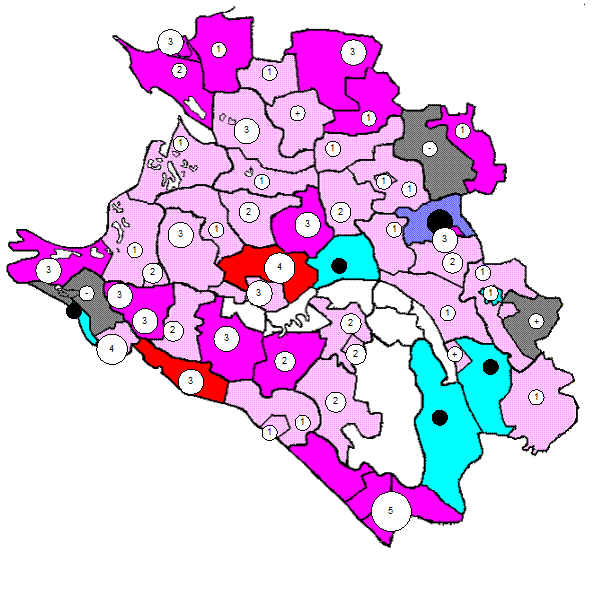THE RUSSIAN FEDERATION
Russia is a democratic federative law-governed state with a republican form of government. The population of Russia is about 150 million people and the territory is 6 million square miles. The Russian Federation consists of 89 constituent entities (republics, krays, oblasts, cities of federal significance, autonomous oblasts and autonomous okrugs, which have equal rights). The authorities of the constituent entities have the right to pass laws independently of the federal government. These laws are valid on the territory of the appropriate federate division, but they cannot contradict federal laws. In case of conflicts between federal and local authorities, the President uses consensual procedures to resolve the problem. In the event a consensus is not reached, the dispute is transferred to the appropriate court for its resolution. The Russian President has the right to suspend acts passed by local executive authorities in the case that these acts conflict with the federal laws of Russia, its international commitments, or if they violate the human and civil rights and freedoms until the issue is resolved by an appropriate court. State power in Russia is divided into three independent branches: the legislative, executive and judicial. Legislative power belongs to the Federal Assembly (the Parliament). Executive power belongs to the central and local governments. Judicial power is provided by the appropriate judicial system and by civil, administrative and criminal legislation. The President is the head of the state and determines the basic objectives of the internal and external policy of the state. He is elected for four years on the basis of the universal, equal and direct right to vote by secret ballot for all eligible citizens. One and the same person cannot serve as President for more than two terms in succession. The President stops performing his duties ahead of time if he resigns, because of impeachment, or if he cannot continue to carry out his duties due to poor health. Elections for a new President are to take place within three months and in the meantime his duties are taken up by the Chairman of the Government of the Russian Federation. The President appoints, with the consent of the State Duma, the Chairman of the Government of the Russian Federation, who chairs the meetings of the government and adopts the decisions on the resignation of the government. The President nominates to the State Duma a candidate for appointment to the post of the Chairman of the Central Bank, presents to the Federation Council candidates for the posts of the Constitutional Supreme Court justices, Supreme Arbitrage Court justices, and a candidate for the post of Prosecutor General. The President forms and heads the Security Council. He is the Supreme Commander-in-Chief of the Armed Forces of the Russian Federation and appoints and dismisses the supreme commanders of the Armed Forces. He appoints diplomatic representatives for approval by Parliament. He confers supreme military and supreme special titles and honorary titles of state. He has the right to show mercy and to decide on issues of citizenship. He has the right to introduce a state of emergency throughout the country or in a particular territory within the Russian Federation. The President has the right to dissolve the State Duma, to announce elections ahead of time and to pass the decision to conduct a referendum on federal issues.
16. Прочитайте текст The State Power System in the Russian Federation и заполните пропуски в тексте словами и выражениями, данными в рамке
THE STATE POWER SYSTEM IN THE RUSSIAN FEDERATION Russia is a democratic ___1___ state based on the rule of law and a ___2___ form of government. State power in Russia is ___3___ by the President, the Federal Assembly, the Government and the courts. One of the basic ___4___ of constitutional government is the division of powers. In accordance with this principle, ___5___ must not be concentrated in the hands of one person or one institution, but must be divided among the ___6___, executive and ___7___ branches of power. The division of powers requires that there be a clear delineation of responsibilities and a system of checks and balances so that each ___8___ of power can offset the others. The President is at the summit of the system of state power. He ___9___ that all the state institutions are able to carry out their responsibilities and keeps watch over them to ensure that no institution can encroach on another’s prerogatives, attempt to usurp power over the country or take over another’s powers. Each institution of state power is only partially responsible for enforcing the Constitution. Only the President has the responsibility of safeguarding the state system, the state’s sovereignty and integrity overall. This is the ___10__ that the other state institutions and officials can exercise their powers in a normal constitutional fashion.
|




